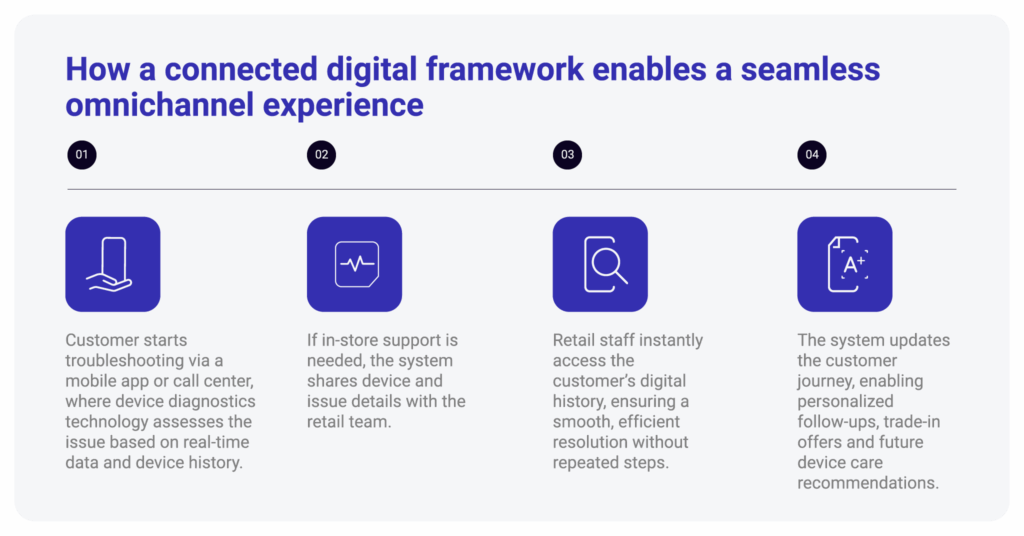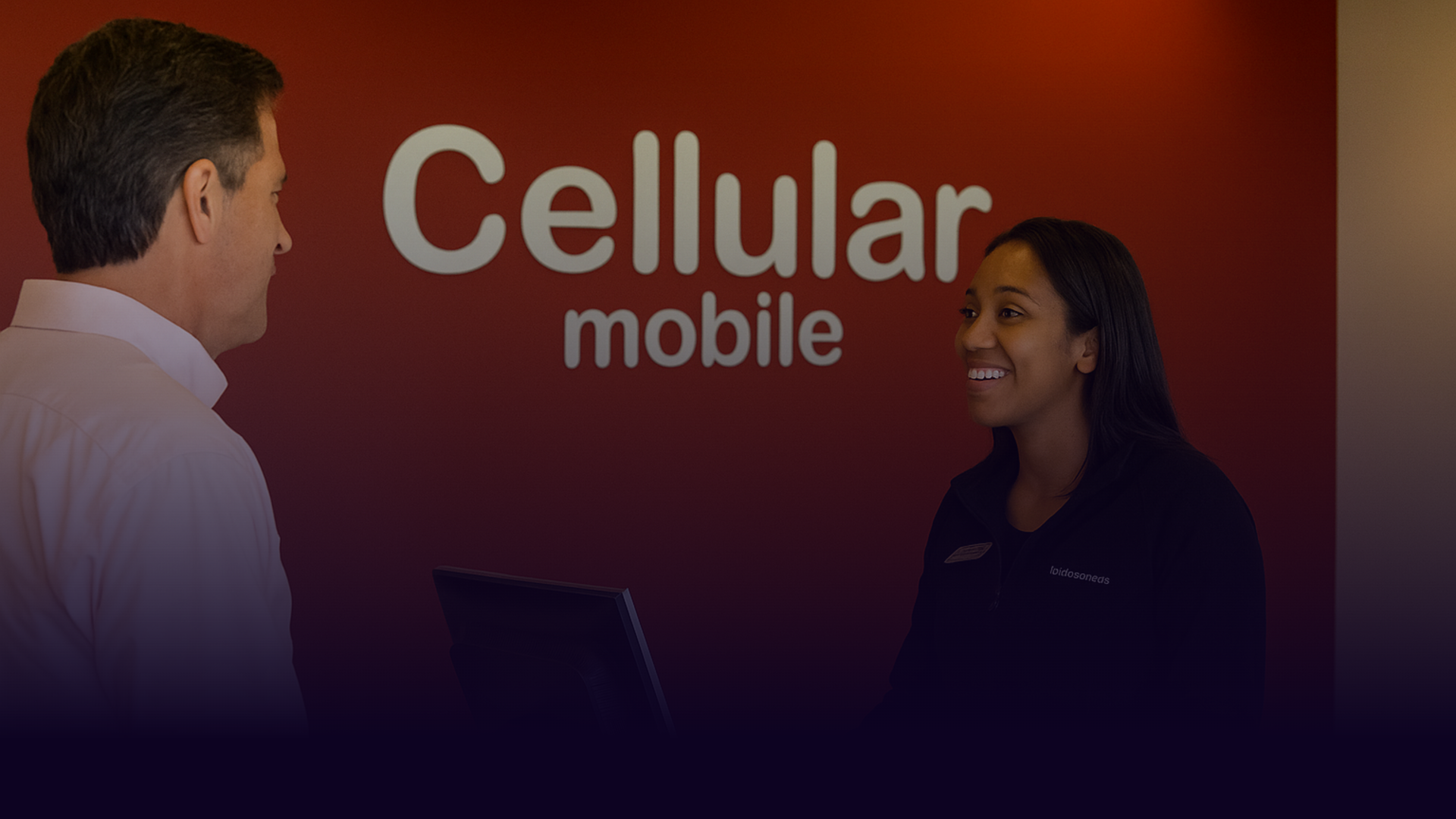Today’s telco consumers expect seamless, omnichannel experiences. Seventy-three percent of customers rely on multiple touchpoints when shopping, seamlessly switching between digital and in-person interactions, and 59 percent of customers prefer a digital-first omnichannel approach to managing device-related issues.
However, retail remains a key touchpoint, accounting for approximately 75 percent of total revenue. Sixty-four percent of customers confirmed they visited a store when seeking support, indicating that digital self-help tools alone are not always enough to solve more complex problems – over 70 percent of customers prefer human support for issues like technical troubleshooting or billing disputes.
Despite customer preferences for an omnichannel experience, many mobile operators or “operators” are still working to optimize retail and digital touchpoint connectivity, in the meantime creating disjointed, repetitive and frustrating experiences.
A lack of contextual awareness means customers frequently have to start processes from the beginning when switching from digital (remote) to retail. Many begin troubleshooting an issue via an app or browser, only to be forced to re-explain their problem in-store – a pain point that 62 percent of customers report when switching between channels. Furthermore, the level of service can often vary between different touchpoints, creating inconsistencies that confuse and frustrate customers.
A key example of this disconnect is trade-in offers from one channel to the other. A customer using an operator’s mobile app at home may receive one trade-in value for their device, only to be given a different, often lower value, when completing the process in-store. These fragmented journeys prevent operators from delivering a consistent experience, resulting in poor customer experience and thus missed engagement and monetization opportunities, as well as a higher risk of churn.
To eliminate friction and ensure seamless continuity, operators should connect data across all touchpoints, allowing customers to move between digital and in-store or call center interactions without disruption. With device history carried between channels, customers can be guided to the best next step without needing to repeat, whether resolving an issue, booking an in-store visit, or completing a transaction online. This further enables faster issue resolution and more effective upsell efforts.
To do this, they need a robust digital framework that combines the ability to capture details on a customer’s mobile device, called “device intelligence,” and omnichannel connectivity to ensure smooth transitions between digital and retail interactions. Here’s how it works:

By implementing this framework, telcos can create a frictionless experience that delivers the following benefits:
- Higher engagement and conversion – Leveraging real-time mobile device intelligence enables highly personalized, timely interactions and recommendations that match customer needs, increasing the likelihood of customer action and purchases. This improved customer experience translates directly to satisfaction and loyalty, boosting NPS by six points.
- Increased customer retention and loyalty – A seamless transition between digital and retail minimizes frustration and reduces churn – 76 percent of U.S. customers say they would remain loyal to an operator that provides smooth, integrated experiences.
- Streamlined operations – Digital self-serve troubleshooting reduces unnecessary service calls and store visits and when customers do enter retail locations, reps have access to device and customer insights, making service more efficient and allowing them to focus on higher value interactions and personalized upsell opportunities.
- Stronger brand and differentiation – A smooth, omnichannel experience builds customer confidence in the telco’s ability to provide seamless, tailored support, creating a competitive advantage. Three-quarters of customers say their opinion of their mobile operator would improve if digitally-assisted retail and care solutions were offered.
By implementing a digital omnichannel framework like MCE’s dDLM platform, operators can provide a seamless journey – ensuring customers get the best of both digital and retail worlds while optimizing engagement and monetization.





